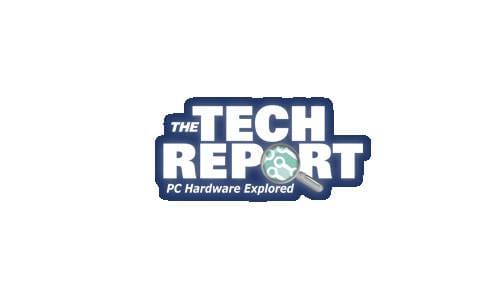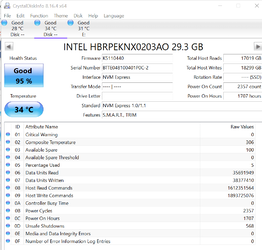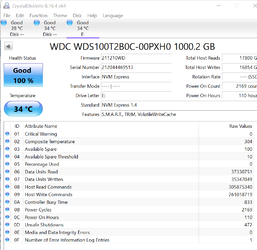- Local time
- 1:04 PM
- Posts
- 7,327
- OS
- Windows 11 Pro + Win11 Canary VM.
As title says, crystaldiskinfo shows 96% for my optane drive, its health, which seems to be low but I do write a lot to drive.
So what does that mean - is this meaning 4% of disk's cells are kaput?
Or does it mean say each cell can be written on average 100 times (say), so now, the cells can only be written 96 times?
Does it mean something completely different?
At what point should I be considering a replacement?
By contrast, my wd 1tb nvme secondary drive is still at 100%.
On this basis, I am inclined to swap out optane for nvme (no optane drive) at some point.
So what does that mean - is this meaning 4% of disk's cells are kaput?
Or does it mean say each cell can be written on average 100 times (say), so now, the cells can only be written 96 times?
Does it mean something completely different?
At what point should I be considering a replacement?
By contrast, my wd 1tb nvme secondary drive is still at 100%.
On this basis, I am inclined to swap out optane for nvme (no optane drive) at some point.
My Computer
System One
-
- OS
- Windows 11 Pro + Win11 Canary VM.
- Computer type
- Laptop
- Manufacturer/Model
- ASUS Zenbook 14
- CPU
- I9 13th gen i9-13900H 2.60 GHZ
- Motherboard
- Yep, Laptop has one.
- Memory
- 16 GB soldered
- Graphics Card(s)
- Integrated Intel Iris XE
- Sound Card
- Realtek built in
- Monitor(s) Displays
- laptop OLED screen
- Screen Resolution
- 2880x1800 touchscreen
- Hard Drives
- 1 TB NVME SSD (only weakness is only one slot)
- PSU
- Internal + 65W thunderbolt USB4 charger
- Case
- Yep, got one
- Cooling
- Stella Artois (UK pint cans - 568 ml) - extra cost.
- Keyboard
- Built in UK keybd
- Mouse
- Bluetooth , wireless dongled, wired
- Internet Speed
- 900 mbs (ethernet), wifi 6 typical 350-450 mb/s both up and down
- Browser
- Edge
- Antivirus
- Defender
- Other Info
- TPM 2.0, 2xUSB4 thunderbolt, 1xUsb3 (usb a), 1xUsb-c, hdmi out, 3.5 mm audio out/in combo, ASUS backlit trackpad (inc. switchable number pad)
Macrium Reflect Home V8
Office 365 Family (6 users each 1TB onedrive space)
Hyper-V (a vm runs almost as fast as my older laptop)













